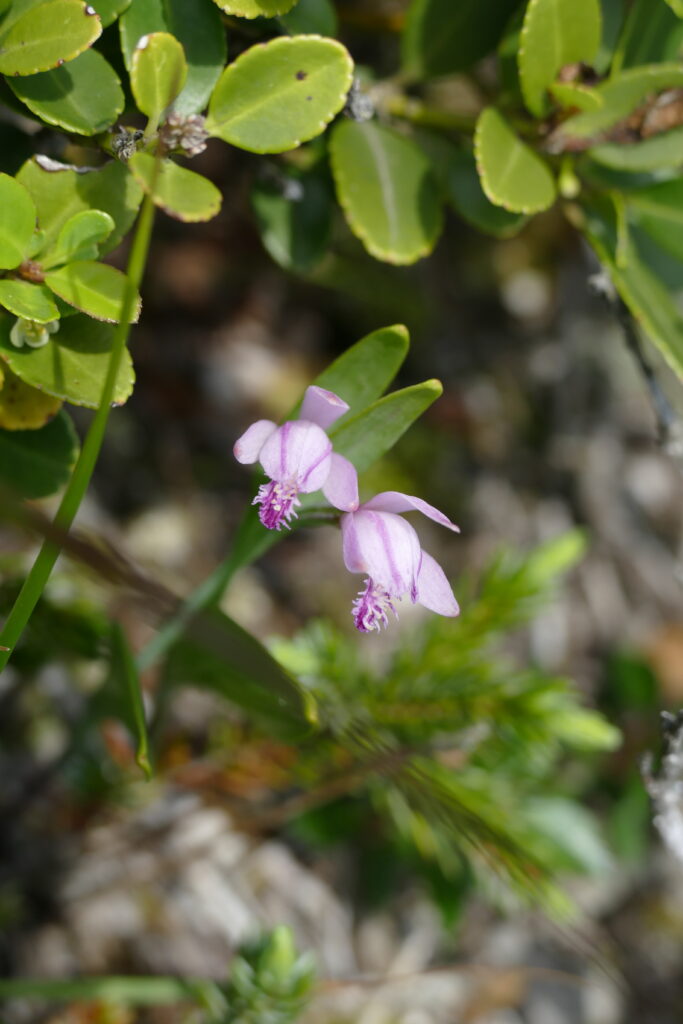Adaptive introgression, the process where species acquire beneficial genes from others through hybridization, is a fascinating mechanism that helps plants and animals adapt to new environments. While this concept is well-studied in some plant groups, it’s often specific to particular settings and species. In our recent research, we delved into this phenomenon on Kozu Island, Japan, focusing on two orchid species: Pogonia minor and Pogonia japonica.

Photos by Koji Tanaka and Kenya Ishida.
In Japan, Pogonia japonica typically thrives in wetlands, relying on cross-pollination, while Pogonia minor is adapted to dry grasslands and is capable of self-pollination. Intriguingly, on Kozu Island in the Izu Islands, we discovered an ecotype of P. japonica flourishing in the dry, wind-swept volcanic slopes—an unusual habitat for this wetland species. This discovery hinted at potential genetic mixing with P. minor, which is more suited to such arid conditions.
To understand whether P. japonica and P. minor have hybridized on Kozu Island, we conducted extensive field studies and genetic analyses. We collected samples of Pogonia plants from various locations on the island and performed artificial pollination experiments to explore their breeding systems. Our findings revealed that all P. japonica specimens on Kozu Island exhibit signs of genetic mixing with P. minor. This suggests that pure populations of P. japonica may no longer exist on the island. Additionally, the chloroplast DNA (which is maternally inherited) of the island P. japonica matched that of P. minor, indicating that the initial hybridization was predominantly from P. minor acting as the maternal parent.

Despite the potential advantages of self-pollination in isolated environments, the island P. japonica does not exhibit autogamy (self-fertilization). This suggests that the widespread introgression observed is likely due to the scarcity of moist habitats rather than a selection pressure for selfing. Essentially, P. minor’s genetic material has enabled P. japonica to colonize the arid volcanic slopes of Kozu Island, but without adopting self-pollination.
Our artificial pollination experiments revealed that while mainland P. japonica relies entirely on pollinators, the hybrids between P. japonica and P. minor on Kozu Island can self-pollinate. However, these hybrids are less common compared to the introgressed P. japonica ecotype, which still depends on pollinators. This finding further supports the idea that the primary driver of introgression is habitat adaptation rather than reproductive strategy.

Our study underscores the importance of adaptive introgression in enabling species to thrive in new and challenging environments. On Kozu Island, the introgression of drought-tolerant genes from P. minor into P. japonica has allowed the latter to survive in an environment that would typically be unsuitable for it. This fascinating interplay of genetics and environment highlights the dynamic nature of evolution and adaptation in plant species.
This research opens new avenues for understanding how genetic mixing can drive adaptation and speciation, particularly in isolated and challenging environments like oceanic islands. As we continue to explore these dynamics, we gain deeper insights into the resilience and versatility of life on Earth.

